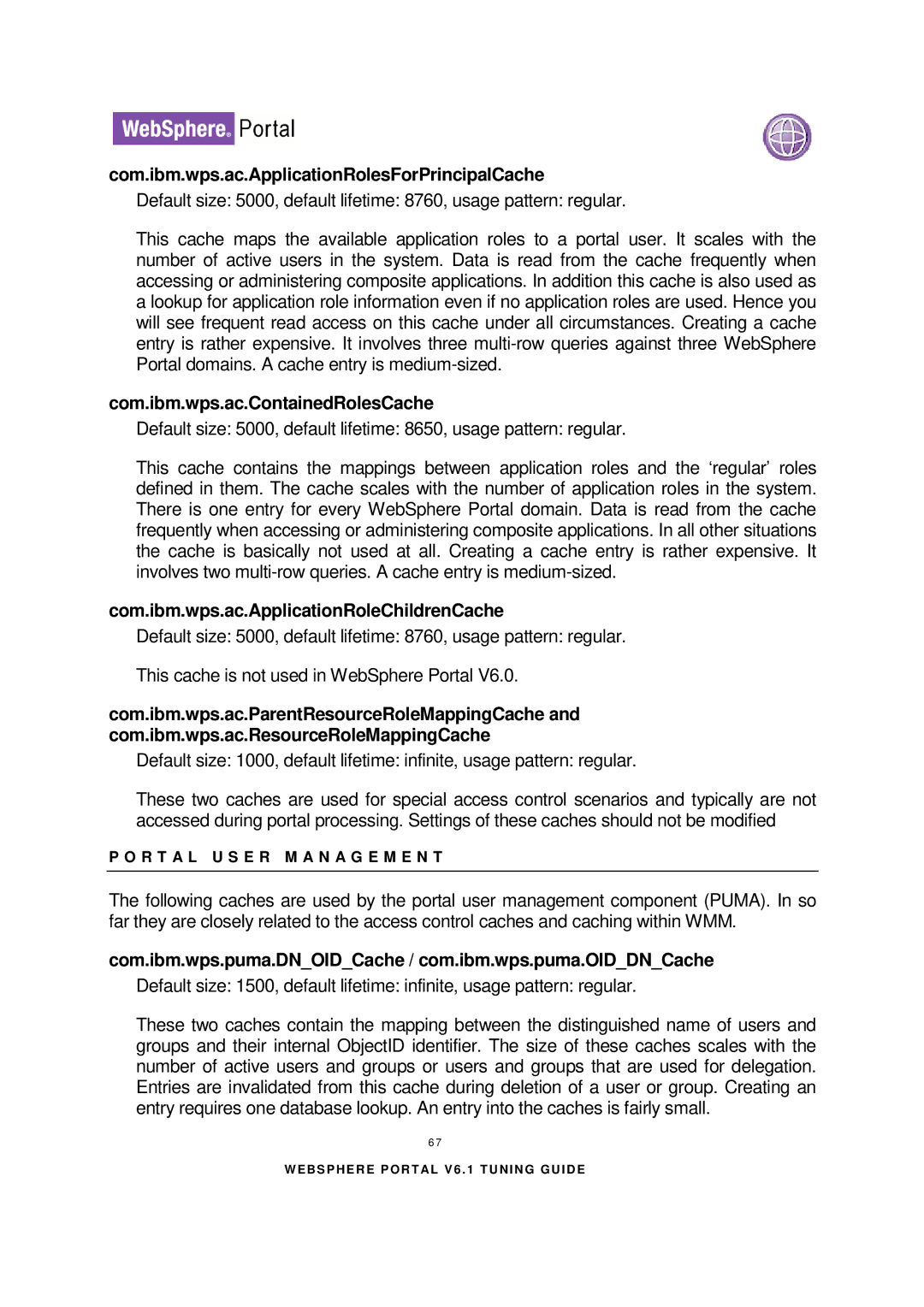
com.ibm.wps.ac.ApplicationRolesForPrincipalCache
Default size: 5000, default lifetime: 8760, usage pattern: regular.
This cache maps the available application roles to a portal user. It scales with the number of active users in the system. Data is read from the cache frequently when accessing or administering composite applications. In addition this cache is also used as a lookup for application role information even if no application roles are used. Hence you will see frequent read access on this cache under all circumstances. Creating a cache entry is rather expensive. It involves three
com.ibm.wps.ac.ContainedRolesCache
Default size: 5000, default lifetime: 8650, usage pattern: regular.
This cache contains the mappings between application roles and the ‘regular’ roles defined in them. The cache scales with the number of application roles in the system. There is one entry for every WebSphere Portal domain. Data is read from the cache frequently when accessing or administering composite applications. In all other situations the cache is basically not used at all. Creating a cache entry is rather expensive. It involves two
com.ibm.wps.ac.ApplicationRoleChildrenCache
Default size: 5000, default lifetime: 8760, usage pattern: regular.
This cache is not used in WebSphere Portal V6.0.
com.ibm.wps.ac.ParentResourceRoleMappingCache and com.ibm.wps.ac.ResourceRoleMappingCache
Default size: 1000, default lifetime: infinite, usage pattern: regular.
These two caches are used for special access control scenarios and typically are not accessed during portal processing. Settings of these caches should not be modified
P O R T A L U S E R M A N A G E M E N T
The following caches are used by the portal user management component (PUMA). In so far they are closely related to the access control caches and caching within WMM.
com.ibm.wps.puma.DN_OID_Cache / com.ibm.wps.puma.OID_DN_Cache
Default size: 1500, default lifetime: infinite, usage pattern: regular.
These two caches contain the mapping between the distinguished name of users and groups and their internal ObjectID identifier. The size of these caches scales with the number of active users and groups or users and groups that are used for delegation. Entries are invalidated from this cache during deletion of a user or group. Creating an entry requires one database lookup. An entry into the caches is fairly small.
6 7
